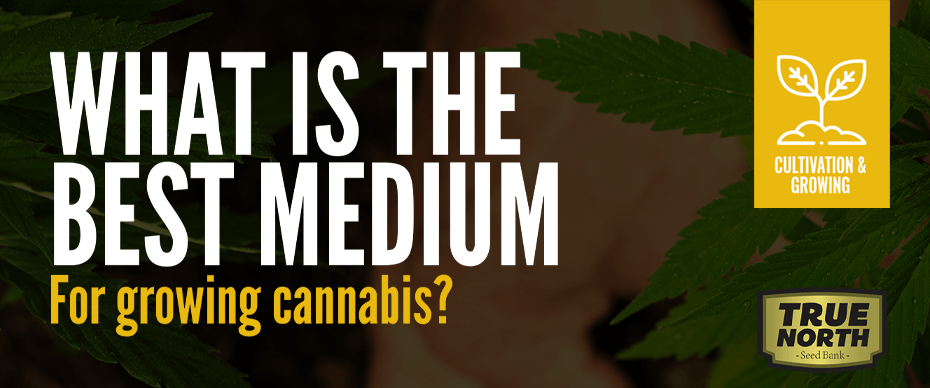
Growers use several mediums to cultivate cannabis. Choosing the best one for you doesn't have to be as confusing as it seems.
The best medium for you will depend on several factors such as your growing space, your budget, and the availability of cannabis equipment. The four most common approaches are traditional soil medium, aeroponics, hydroponics, and aquaponics.
Keep reading to know more about the different growing mediums and their benefits.
A Comparison Of All The Cannabis Growing Methods
Cannabis growers use different optimum yield approaches, namely using soil, hydroponics, aquaponics, and aeroponics. The DIY approach to cannabis cultivation is rewarding. Once you harvest your first successful crop, you can advance your growing skills and even learn how to feminize your own cannabis seeds.
Traditional Soil Medium
The soil remains the most common growing medium. Before you begin, you'll want to choose whether you start your cannabis from seeds or clones.
Growers can germinate seeds outside in a suitable climate, provided the weather is mild enough for seeds to survive.
Cultivators who work with soil must keep an eye on the pH level of the water they add to the soil.
Balance of nutrients is critical and can be achieved either by purchasing appropriate soils or creating a custom super soil.
Hydroponics
By substituting coconut fibre for soil, growers can grow cannabis by taking supplements to their plants via water.
This method is called hydroponics, and it is an efficient method of growing cannabis because it accelerates the process.
Cannabis grows much more quickly when it is not required to develop extensive root systems.
Additionally, they have larger buds because the nutrients are available directly to the plants.
This technique necessitates the optimal combination of equipment and additives.
If piping is angled or spaced incorrectly, bacteria can grow, posing a threat to the crop's health.
Aquaponics
Aquaponics combines explosive aquatic life with cannabis crops to promote exponential growth.
Converting hydroponic systems to aquaponic systems reduces both water and fertilizer costs.
It is expensive to install but has numerous advantages.
Also, fish such as tilapia or shrimp, which live in an environment, are potential additional income sources.
Aeroponics
Aeroponics became popular for plant research as an efficient method of farming:
Growers spray a nutrients solution on the exposed roots of cannabis plants for an increased growth rate and yield.
However, because of its high cost, aeroponics produces two crops per year.
Growing Cannabis Old School
When growing outdoors, growers have the choice of whether to use super soil or your local soil.
The advantage of outdoor growing is that natural growing conditions and receiving light produce the best quality cannabis.
However, outdoor plants are difficult to disguise, and uncontrollable weather can significantly affect your crop.
Here is a guide on growing cannabis outdoors:
Consider your weather: Cannabis is relatively resilient, but extreme weather conditions will affect the growth and yield of your plants.
Choose your growing space: Your outdoor growing area must have plenty of sunlight.
Good soil: Cannabis plants can grow directly in the ground or pots. The soil should be rich in nutrients and has excellent drainage.
Additional nutrients: Nutrients are crucial in cannabis growth. Depending on your growing practices, you may add other organic or synthetic nutrients.
Water your plants frequently: During summer, some cannabis plants may need up to 10 gallons of water every day.
Protect your plants: Temperature is difficult to control in outdoor cultivation. Using greenhouse or protective enclosures may help in regulating temperature. While rain is helpful in watering, it can promote the growth of mould or powdery mildew. To minimize pests, keep your cannabis plants separate from other plants.
Growing Cannabis Indoor
Indoor growing is a preferred method as every aspect of the growing environment and nutrients is controlled.
However, it requires more equipment than outdoor growing. On the plus side, you don't have to worry too much about pests that may harm your cannabis plants.
For beginners, it is best to start small.
Since natural conditions do not encourage the flowering phase, indoor growers must reduce their light exposure from 18 hours to 12 to trigger the flowering cycle.
The primary benefit of indoor growing is consistency.
With a flexible growing system, growers can provide an optimum environment for each growing phase.
Additionally, fans can help air exchange throughout the canopy, while other strains may require a warm temperature when lights are off.
If the room is too dry, a humidifier can be added to improve moisture levels.
Transplantation is also required as plants grow.
Some growers may start in a one-gallon pot and increase the pot size as the plants grow, while others transplant only once.
Besides, indoor growing has a more negligible risk of pests attacking cannabis plants compared to outdoor cultivation.
Yet, insect prevention is imperative for both outdoor and indoor growing.
Growing Cannabis Hydroponics
"Hydroponics" simply means crops planted in nutrient water and growing medium.
The technique of hand-watering pots of inert growing medium with a nutrient source produces a faster growth rate.
The sophisticated systems, multiple water timers, and reservoirs save time and effort.
There are plenty of plug-and-play hydroponics systems available for beginners.
Below is a guide on how to grow cannabis plants with the hydroponics method:
Reservoir: Your reservoir is the container for your nutrient solution. A reservoir can take on various shapes and sizes, depending on the size of your grow space.
Grow table: The table's purpose is to collect and return excess irrigation water from the plants to the reservoir. This low point is where the drain will be installed.
Clay pellets: Before using clay pellets, saturate the pellets with water overnight. Holes need to be drilled in the bottom of the bucket for drainage and should be half the clay pellets’ size.
Dripline: Drip line equipment can be used to extend the drip line to each bucket. Attach drip line emitters to the end of the drip lines.
Test the system: Run your system without plants to see if everything is functioning correctly.
Nutrient solution: Create your nutrient water solution in your reservoir.
Add your plants: Insert the drip line so that moisture is reaching the roots of your plants.
Growing Cannabis Aeroponics
Aeroponic systems use less room than hydroponics, and outdoor growing as the roots of the cannabis plants do not need to fight for space.
However, this efficient growing method is one of the most expensive cultivation approaches for cannabis plants.
Aeroponics requires 24/7 supervision which may raise the cost of labour to run the system.
Besides, the cultivator must have the skills and knowledge about aeroponics and the strains planted.
In case of a power shortage, the plants may be at risk of dying, thus needing a backup power generator.
The ideal environmental conditions are maintained with a steady mist of atomized nutrient solution and lighting.
Since the roots are exposed to oxygen and carbon dioxide, oxygen supply is not a problem for aeroponics growers.
Also, despite the plants’ high requirements, aeroponics produces among the highest yields of trichomes compared to other growing methods.
Growers can control the amount of water and nutrients according to the growing phases.
About the author: Heather Burton
Heather lives with her husband and two children in beautiful British Columbia. Her passion has always been to enhance the lives of others by helping them reach their business goals.
Content management is her specialty, and writing is what she does best. Working specifically in the cannabis market, Heather strives to help dispensaries, patients, doctors, manufacturers and recreational users by giving them the voice they need. When she is not writing, you can find her anywhere outdoors and away from the screen.












